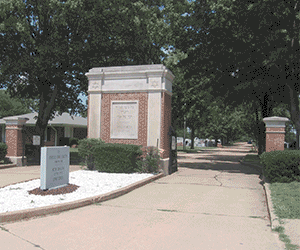A new perspective on the meat we eat
Published August 12, 2009
The entire Book of Deuteronomy is presented as the last testament of Moses. Camped outside the Promised Land, Moses knows he will not enter. He admonishes the Israelites with loving advice and strong warnings, seeking to keep them from physical and spiritual harm. His greatest fear is that the Children of Israel will fall into the practice of idolatry. This week’s Sidrah –Torah portion — is known as R’eh. It begins with the Book of Deuteronomy Chapter 11 verse 26, and continues to Chapter 16 verse 17. While there are many edifying passages ripe for sermonic comment within the Sidrah, a significant amount of text is concerned with animal sacrifices.
One focus of the concern is making clear the difference between the slaughter of animals for food and the slaughter of animals as a part of divine worship.
For most of us, contact with meat fit for human consumption takes place in the meat aisle of a supermarket. We lift hermetically sealed packages from refrigerated display cases and place them in a shopping basket, right next to the frozen vegetables and laundry detergent. We are about as far removed from the actual slaughter of a living animal as the National Stockyards is from Creve Coeur. That is, in fact, the case. My father-in-law, zichrono livracha, was a meat packer in Detroit. Many years ago, while on a visit to St. Louis, he suggested a trip to a slaughter house at the National Stockyards on the East Side. He wanted to say hello to some colleagues in the business and check out their facility.
The slaughter house operated with industrial efficiency. The killing and processing of cattle proceeded with a combination of hard human labor and mechanical indifference. There are good reasons why the Discovery Channel chooses to follow Alaskan fishermen in pursuit of King Crabs instead of meat packers in Iowa, Illinois or Missouri. There is no blood and gore on the fishing boats, unless a crewman gets injured. We walked through the plant from the killing stations to the warehouse sized refrigerators holding hundreds of sides of beef. Knowing that I was a rabbi, one of the principals of the company asked me an intriguing question.
“Still praying for the restoration of the sacrificial cult in a restored Temple in Jerusalem?”
“As a matter of fact, my Reform Jewish community stopped praying for the restoration of the Temple and its sacrifices by the 1860s,” I replied.
“Well, for those who still do pray for the restoration of animal sacrifices, a trip over here might give them pause.”
In R’eh, the Israelites are told that they may slaughter animals for food just about anywhere. It is when they undertake to worship in accordance with the Torah, that they must offer their animal sacrifices at “…the site where the Eternal your God will choose to establish His name.” Before this explicit commandment, the only time meat could be consumed was in the context of a sacrificial offering in a sanctuary. At all times, whether for worship or for food, the Israelites were admonished to avoid consuming blood. “You must not partake of the blood; you shall pour it out on the ground like water.” (Deut. 12:16) Later in the same chapter an explanation for the prohibition is given. “…for the blood is the life and you must not consume the life with the flesh.” (Deut 12:23)
The meat case in the supermarket insulates us from the actual death of a living creature to provide our food. Our ancestors killed and ate meat with divine permission. They were reminded constantly that a life had been taken. They never took such things for granted. Pouring out the blood was a recognition that all creatures are ultimately, the possession of the divine. It puts that end-of-summer barbecue in a whole new perspective.
Rabbi Mark L. Shook is Senior Rabbi of Congregation Temple Israel and is a member of the St. Louis Rabbinical Association.














